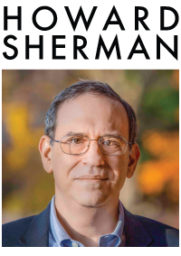I am not a betting man, but if you are reading this column, I would wager that you’ve already listened to the Hamilton original cast recording. Yet given this publication’s UK reader base, and the relatively small number of people who have actually seen Hamilton in comparison to the number of albums sold, I’m also willing to bet that a great number of you haven’t yet seen the show.
I raise this issue not to once again lionize or even analyze Hamilton, but rather to raise the fact that the success of the Hamilton recording, a virtually complete version of the show’s through-sung score, means that a great many people who ultimately see Hamilton will do so while being very familiar with the full text. It’s quite possible they’ll be able to sing along.
To those who say that this has often been true for cast recordings, I would counter that few shows have been recorded so fully. Yes, many people know a musical’s songs before seeing it, and I know of many people who specifically prefer to listen to a score before seeing a show (though I’ve never understood the need). However, for most musicals, songs aren’t all there is. There are, of course, exceptions, such as Les Miserables and Jesus Christ Superstar, but I wonder whether those recordings were as widely heard as Hamilton prior to the shows being seen.
As the second Hamilton company prepares to begin performances in Chicago later this month, and other engagements are announced, it’s fair to say that the story will hold few surprises. Sure, there’s a brief neck-breaking moment that has no auditory presence, but even the story’s final chapter is pretty much a given to those who secure the golden tickets. As for Burr shooting Hamilton, that’s in most US history textbooks, and we probably wouldn’t have a show without it.
This textual familiarity affords a rare opportunity for making an important distinction too often lost on many theatregoers, and certainly on the casual ones, namely the difference between a play (or musical) as text and in production. The foreknowledge not only of the story, but of the very words of the piece, means that what will be new (video clips notwithstanding) is the direction, the set, the lights, the costumes and so on. Even people familiar with pictures and videos of the original Broadway cast will be embracing its physicality for the first time, without the “distraction” of trying to keep up with what is being sung. Yes, some will register vocal variances from the recording, especially with almost all of the original cast gone. Still, the primary focus will be on the non-auditory elements, as what they may have previously imagined is made flesh before them.
Some might be tempted to say that this holds true for Shakespeare plays, given how widely read, taught and seen his ‘greatest hits’ already are. I would counter that, yes, for regular theatregoers there is the opportunity to ultimately compare how productions differ over time, long after we’ve learned when Hamlet will stab Polonius, but I doubt that many people have ever seen Hamlet for the first time only after having committed the majority of the script to memory.
Many modern musicals, when staged indelibly the first time out, tend to form a template by which all subsequent productions – I refer not to companies stemming from the original, but later regional, university and amdram productions – model themselves. It wasn’t until John Doyle’s Sweeney Todd that that show was freed from the visual spirit of Harold Prince’s original staging; Cats is in the process of having its 1980s design re-imprinted on US audiences even as we speak.
So while we are in the full flush of Hamilmania, and long before its theatre audience numbers manage to equal or surpass its cast recording listeners, the show can be a teaching tool, not simply to students but to the public at large. The brains of countless fans have partitioned an area just for the recording masterminded by Lin-Manuel Miranda and Alex Lacamoire, but their visual imagination is still free until they see the work of Thomas Kail and his team. In that space, and for that time, theatregoers have the chance to explore and ultimately understand what it means to realise a production.
And I, having been fortunate enough to have seen Hamilton three times so far, already look forward to how another set of creative artists will reinterpret the show many years from now. If I live that long.
This post originally appeared in The Stage newspaper.




